BOIFFILS Architectures, a firm recognized for creative international architectural and design interventions for shopping centers, hotels, boutiques, and brand images, is proud to unearth its 5-year expansion project of Terminal 2 of Singapore’s internationally-renowned Changi Airport, comprising 120,000m² across three levels.
The agency completely redesigned an existing terminal building, and the Paris agency’s focus on traveler experiences and connections to the earth’s elements, particularly in the Departure and Arrival halls, has provided Singapore with a new 21st-century gateway to the ‘Garden City’.

A Family Affair
Founded in 1984 by Jacqueline and Henri Boiffils, BOIFFILS Architectures is celebrating its 40th year as a family-owned agency, now led by Basile Boiffils, DPLG architect, a second generation following in the footsteps of its founders. The agency has carved out a place in the international market as an interior design workshop for prestigious retail brands, particularly in the fashion and cosmetics industries. With the completion of a luxury shopping mall in Bangkok in 1994, BOIFFILS Architectures gained a foothold in the Asian market at a time of sustained growth and development.
Since joining the agency in 2004, Basile Boiffils has provided the business with a new dynamic that has paved the way for the expansion of the agency’s portfolio of projects in various markets throughout Asia, most notably in Thailand, Malaysia, China, and India.
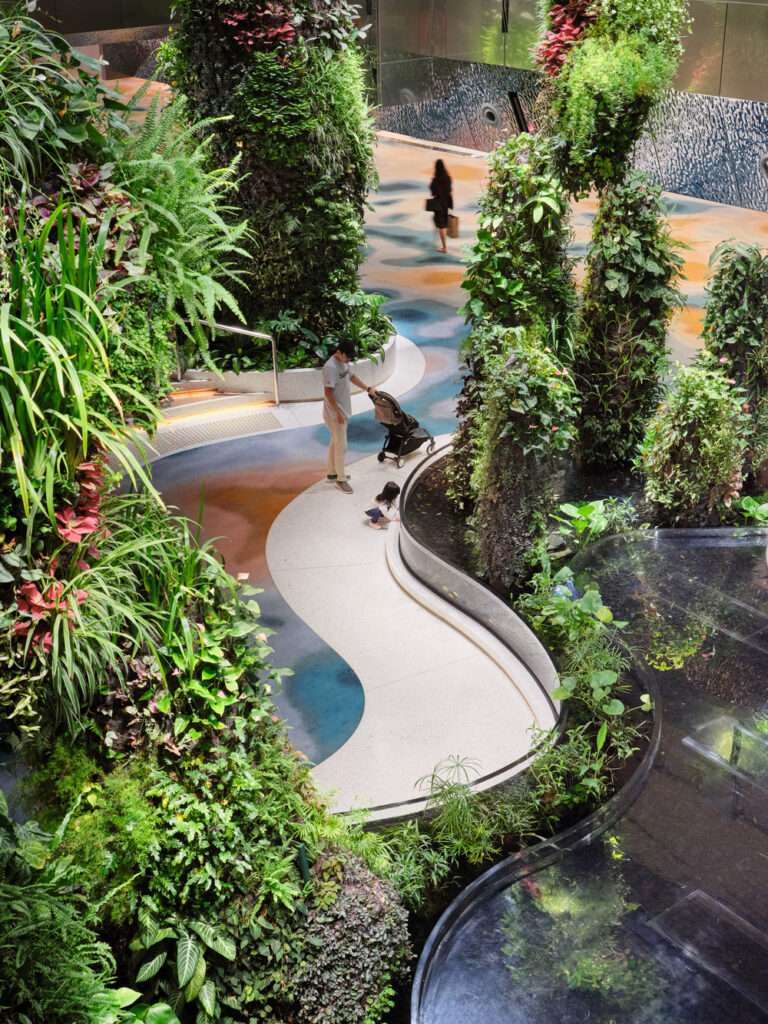
An Innovative Presentation
The agency’s architectural and commercial approach piqued the interest of Changi administrators, leading them to include BOIFFILS Architectures in their tender for the renovation and expansion of Terminal 2. Recognized for finding solutions to complex problems, and for its familiarity with Asian culture and markets, the agency was able to bring significant artistic and cultural elements to the project.
“Our deliberate departure from the typical approach to most airport projects really caught the attention of the Changi Airport Group. Our proposal placed the priority on the traveler experience, rather than on the management of passenger flow.”
– Basile Boiffils

Originally built in the 1990s and renovated in 2003, at a time when efficiency prevailed, BOIFFILS Architectures prioritized passenger pleasure and comfort through punctuations of visual, auditory, and interactive experiences.
The project spans three levels, including Arrival and Departure halls, and a mezzanine on Level 3 where food and beverage options are available. The existing terminal architecture was rooted in the traditional airport focus on business efficiency, rather than comfort and pleasurable user experiences. BOIFFILS Architectures’ idea was to romanticize the airport experience, infusing pleasurable experiences into increasingly stressful travel scenarios through a series of visual, audio, and interactive stimuli intended to soothe the mind, body, and soul.
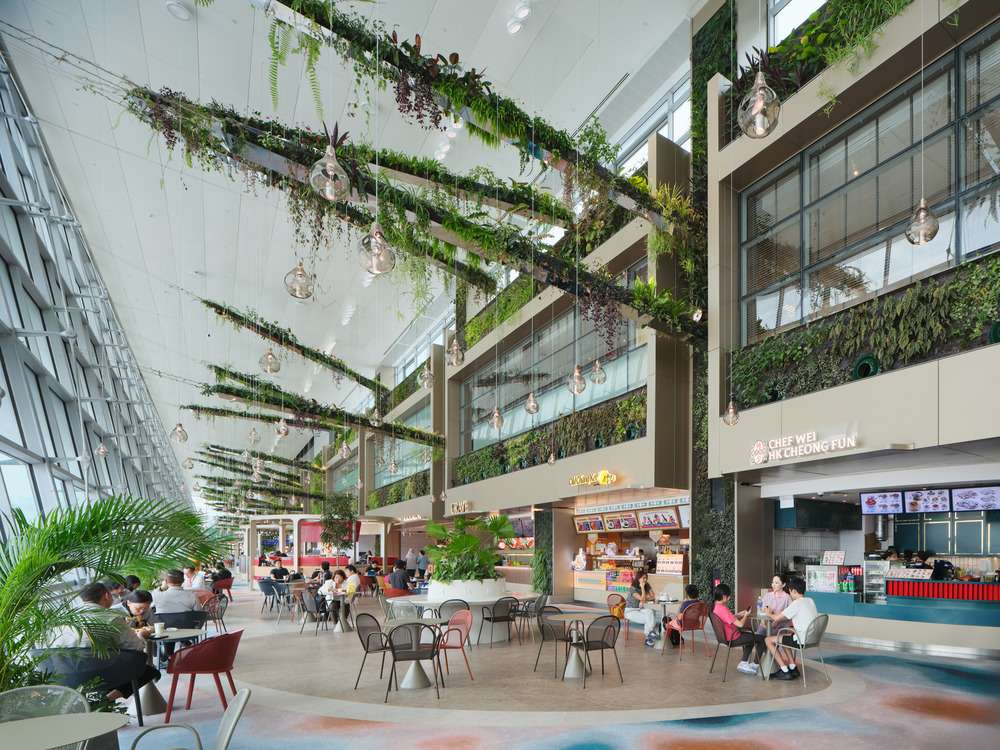
Leveraging their extensive experience in shopping mall design, BOIFFILS Architectures developed efficient circulation patterns and welcoming environments, which were critical components of their vision for the project. Their experience in developing relationships of trust with clients also played a critical role, and the agency collaborated closely with Changi’s teams. Through monthly presentations and constant requests for approval of materials and creative ideas, the working relationship evolved into a partnership of trust, with the client embracing the agency’s creative visions.
“Singapore is a model of perfection, and the Changi project management team was the most professional that we have worked with to date. Through constant dialogue, our pursuit of perfection harmonized with the expertise of the Changi team.”
– Jacqueline Boiffils
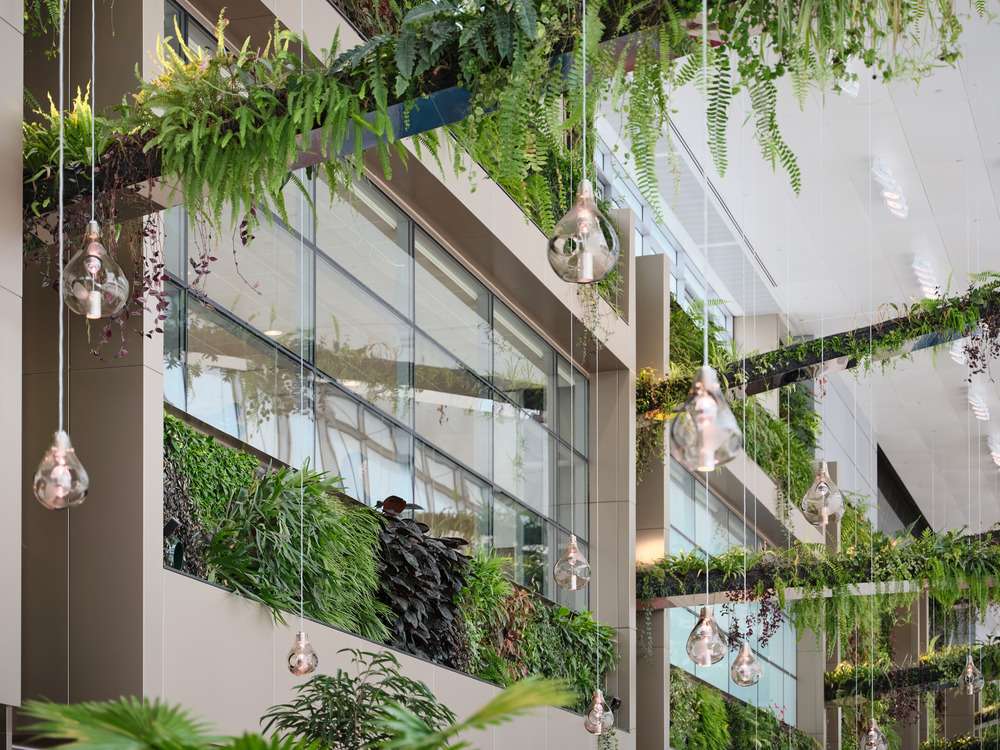
A Fluid Gateway to the Garden City
As the first step in travel, airport experiences can be daunting. BOIFFILS Architectures endeavored to create a serene multi-sensory environment allowing passengers to enjoy the calming effects of nature. The project was designed as a journey across an indoor landscape encompassing minerals, water features, and lush vegetation in various forms and densities.
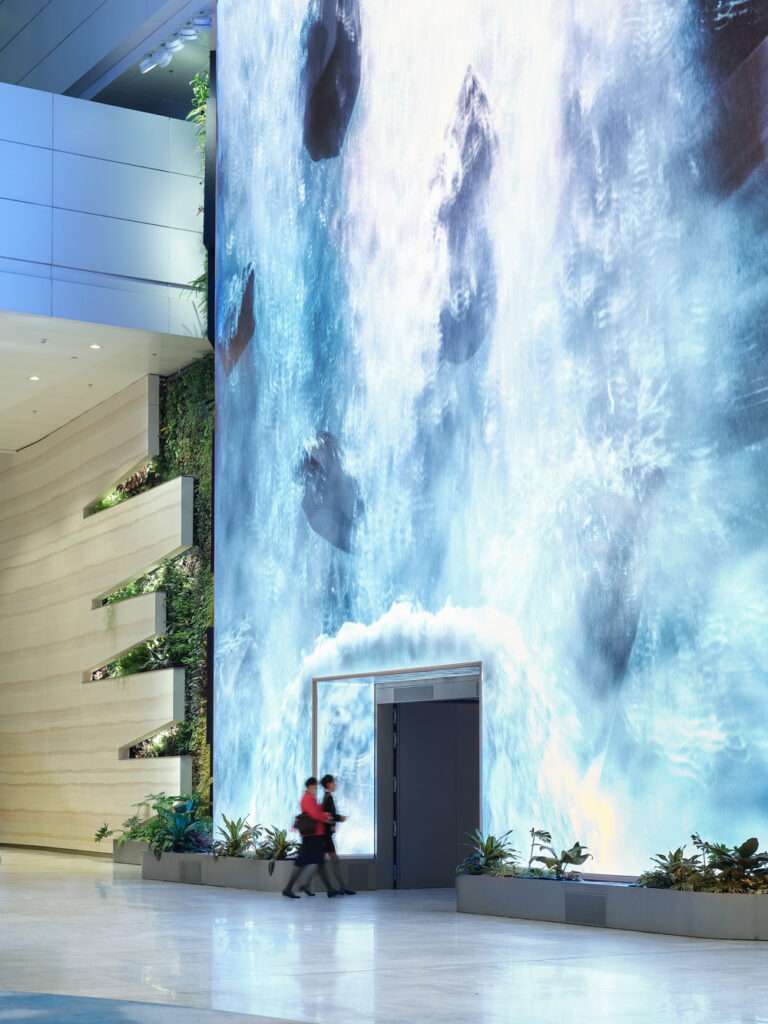
To humanize the airport experience and keep people connected, BOIFFILS Architectures treated the spaces with design philosophies reminiscent of luxurious hotel complexes, with a welcoming and personalized check-in experience. Rich earth tones, noble materials, and high-tech elements were integrated into an environment traditionally defined by cold and sterile colors. Upon arrival at the departure level, bright, colorful carpeting evokes aerial views of land and sea, with colorful and textured lines representing the sedimentary layers of the earth. Vegetated columns extend from the ground floor, forming multiple atriums inspired by nature and its elements. Borrowing from contemporary hotel hospitality, BOIFFILS Architectures humanized the check-in process, making it quick and efficient. The open floorplan positions each of the automated check-in kiosks and baggage drop belts as uniquely shaped and positioned islands, rather than as traditionally linear counters.
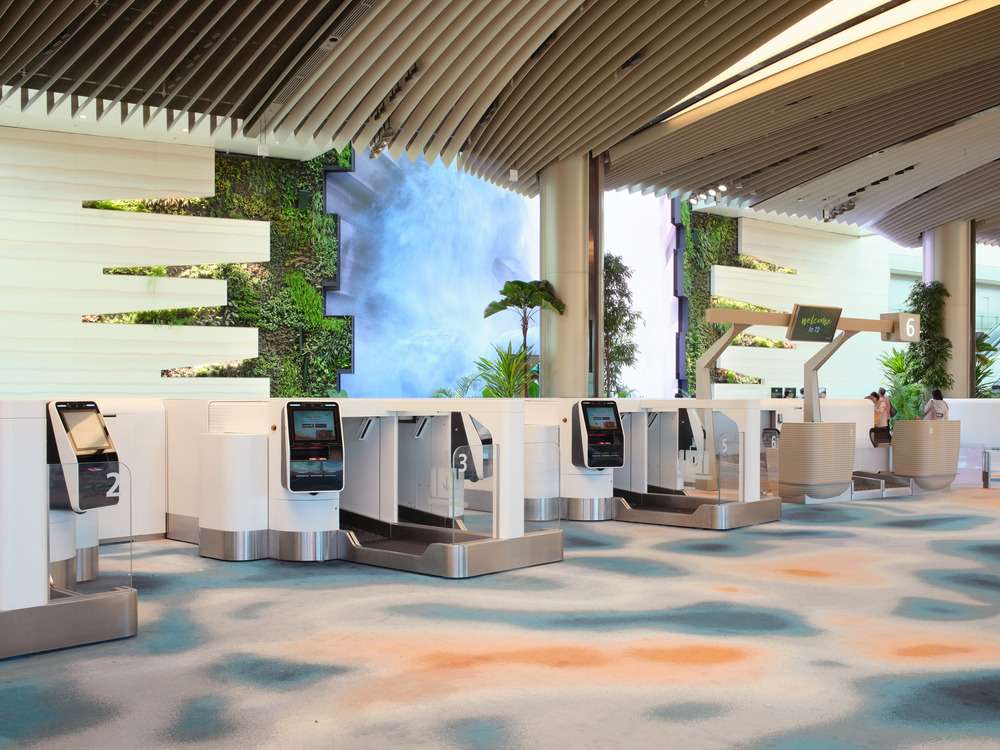
Upon arrival in Terminal 2, travelers descend a set of escalators to a highly automated and streamlined immigration zone, where BOIFFILS Architectures strived to conceal the technical and regulatory aspects. Travelers are surrounded by an environment of vegetated walls and colorful carpeting, with continuous, organic lines facilitating transitions and offering clear forward views of adjoining steps in the journey as part of a shared architectural language. Unobstructed views from the immigration zone through to the baggage carousels and ‘meet and greet’ area induce a calmer mindset, allowing travelers to get their bearings prior to moving forward.
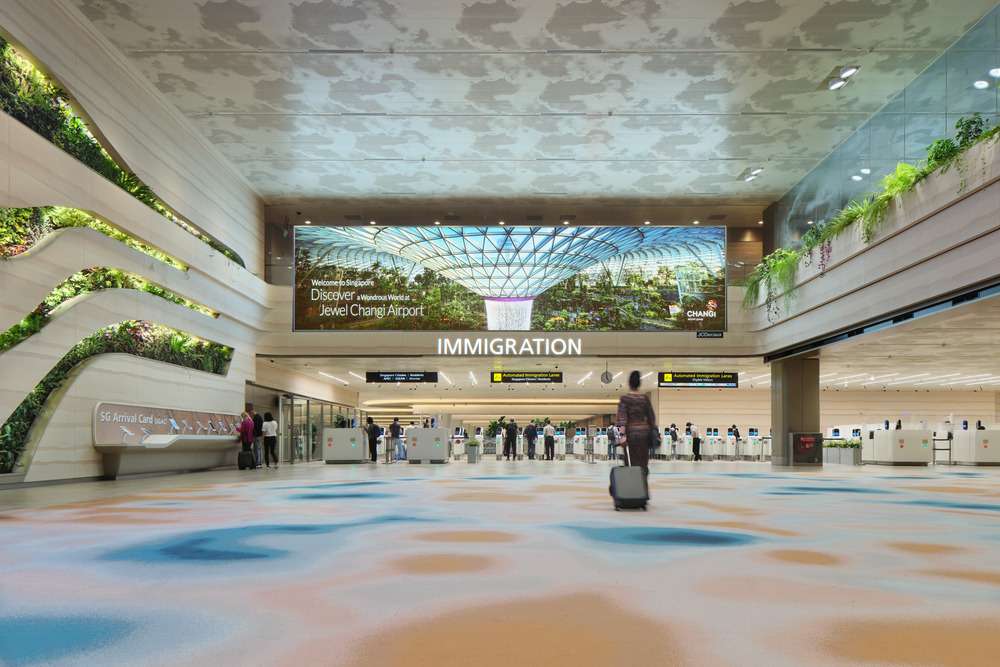
Between Earth and Sky
Looking up, BOIFFILS Architectures designed a complex ceiling structure in the Departure Hall to conceal a world of its own, where a network of essential catwalks provides access to a multitude of mechanical systems. Developed through parametric design, they created an intricately baffled ceiling composed of aluminum blades, with each fin forming a double-curved configuration that arches and twists to fulfill its function.
“The ceiling is designed to conceal every little detail, including sprinklers, security cameras, and floor lights that are tucked between the baffles, almost unnoticeable to the eye. Most of the elements that we created are partially or completely invisible, which was a conscious effort on our part to remove the impression of an airport as being a cold and engineered space.”
– Jacqueline Boiffils
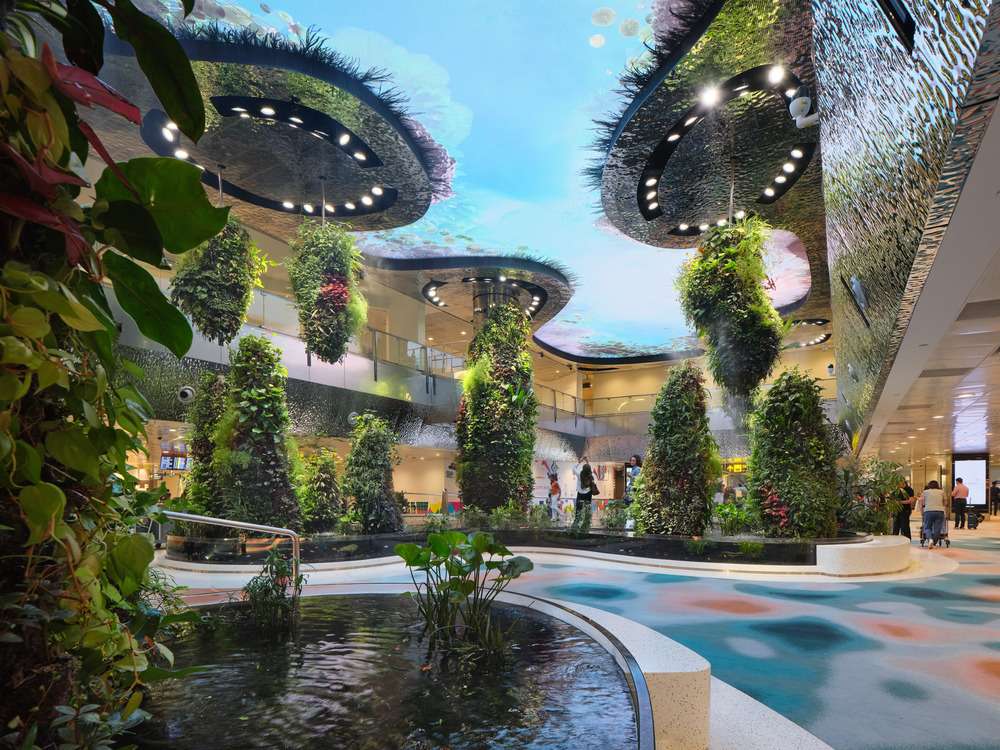
The nearly invisible lighting, designed in collaboration with French lighting design consultant Ph A Concepteurs Lumière, combined with the choice of semi-polished flooring, infuses a far more soothing and serene vibe into the atmosphere than that experienced in traditional airports. Accordingly, noise levels are noticeably lower. As an agency that has embraced nature in its DNA since its founding, additional lighting was designed to provide all of the necessary illumination required by indoor vegetation, all custom-designed according to the optimal requirements of each species to ensure long-term sustainability.
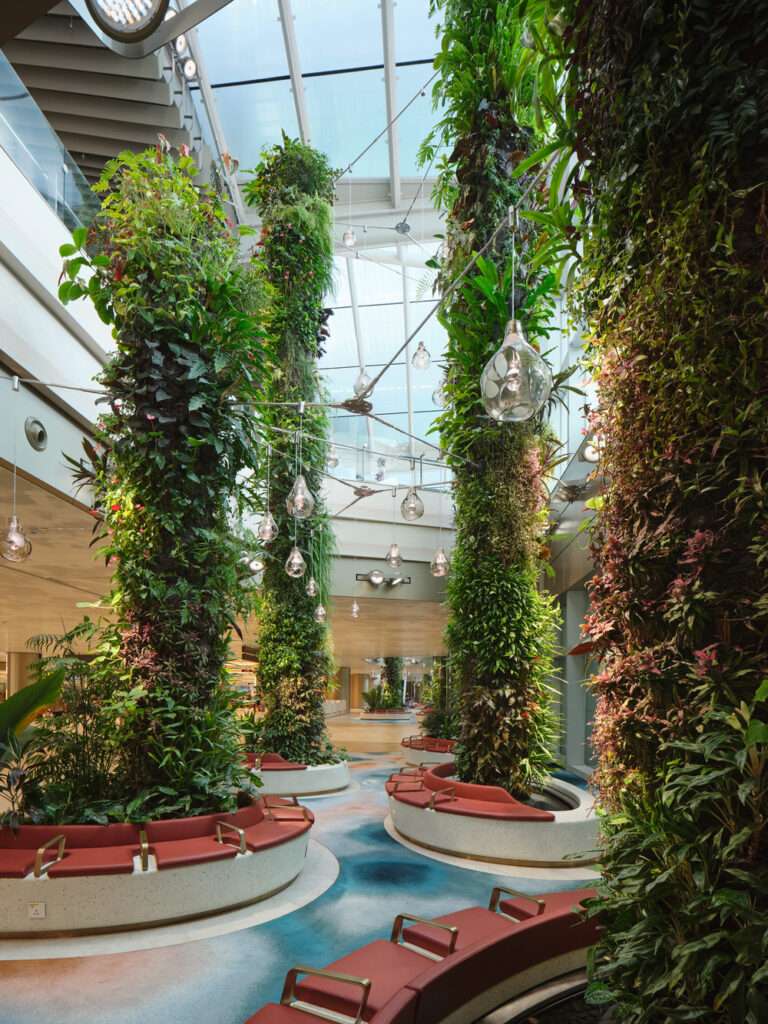
A Dialogue Between Technology and Nature
Continuing with the aim of offering travelers new experiences, BOIFFILS Architectures created two spaces where nature and technology are intimately intertwined, inviting multimedia studio Moment Factory to collaborate on the creations.
Travelers will have the opportunity to experience Singapore’s flora through two unique immersive installations. Leveraging advances in technology that would not have existed a decade ago, BOIFFILS Architectures created a visual focus at the central axis of the Departure Hall in the form of a 14-meter-high digital waterfall display known as “The Wonderfall”. Soothing cascades flow between vertical gardens rising on both sides of the curved LED screen, composed of three large flat segments to provide an optimal view. Several times an hour, the tumultuous waters change direction on megaliths, creating a fascinating dance between the elements. Set to music composed by Jean-Michel Blais, the choreography channels the raw energy of a torrent into moments of grandeur until gravity returns the water to its natural state.
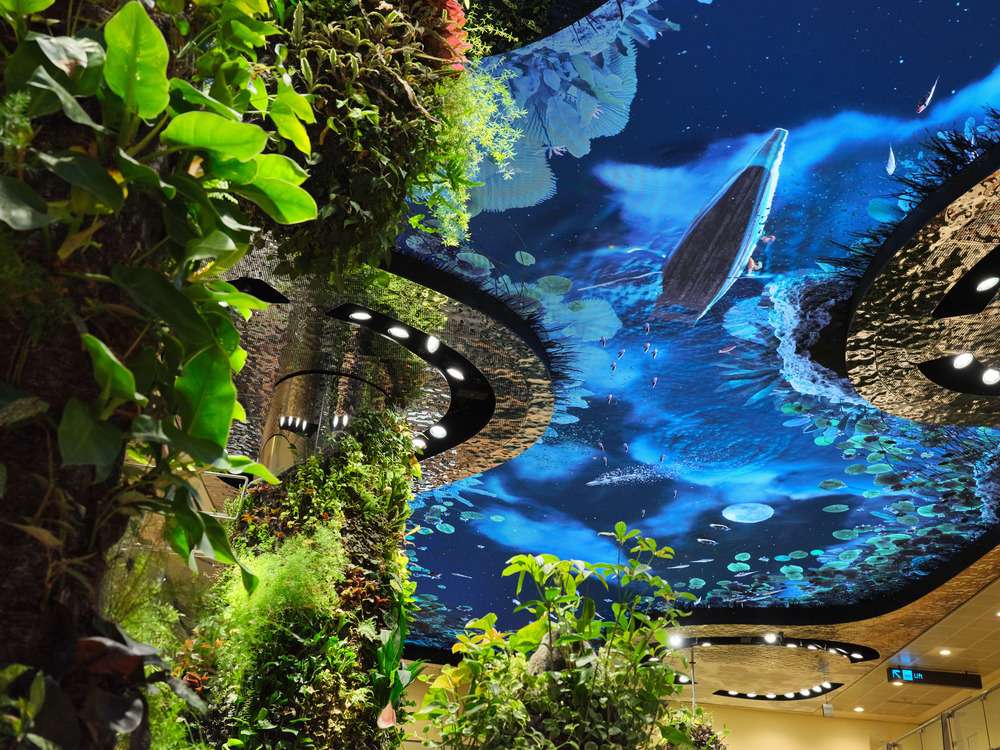
Collaboration with Moment Factory extended to a renovation of the south garden of the transit area, providing a restful respite for layover passengers disoriented by intercontinental travel. To provide a sense of connection with the outdoors, where they are not permitted to go, the collaborators created an LED ceiling that replicates external weather conditions in real-time, from overcast skies to sunrises and sunsets. Additionally, every 30 minutes, a show features the skylight screen producing rain, accumulating water, spurring vegetation growth, and more. On the floor, an acrylic-edged platform gives the impression of walking on water, embraced by abstract mirrored steel walls and flowing water in an area collectively known as ‘Dreamscape’.
Throughout the garden, the tropical sounds of Singapore can be heard through bird songs, insect noises, and other local creatures, generated in real-time from a catalog of nearly 100 recordings and broadcast through an immersive 3D sound system. BOIFFILS Architectures enlisted the contribution of Patrick Blanc, an artist botanist, and inventor of the green wall, for the botanical sequences and plant selection.
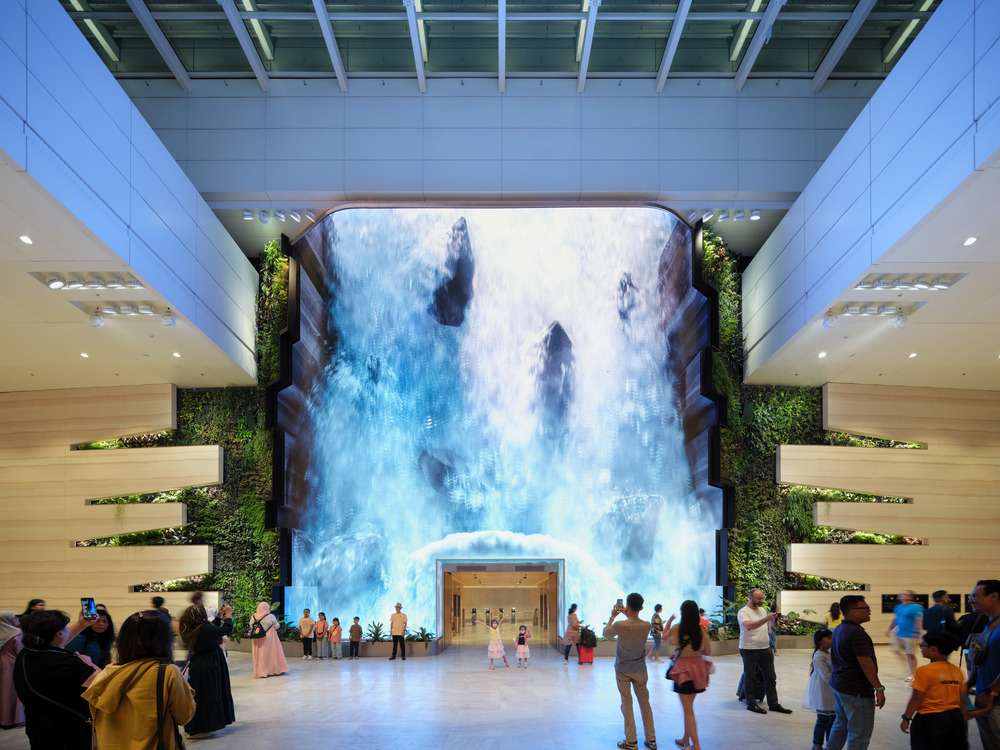
Sustainability and Other Achievements
After submitting their winning bid in late 2018, BOIFFILS Architectures spent most of the first year further developing their design concept. Construction of Terminal 2 at Changi Airport broke ground in 2020, and opening began in phases in 2022. On November 1, 2023, an official ceremony unveiled the entire complex, several months ahead of schedule.
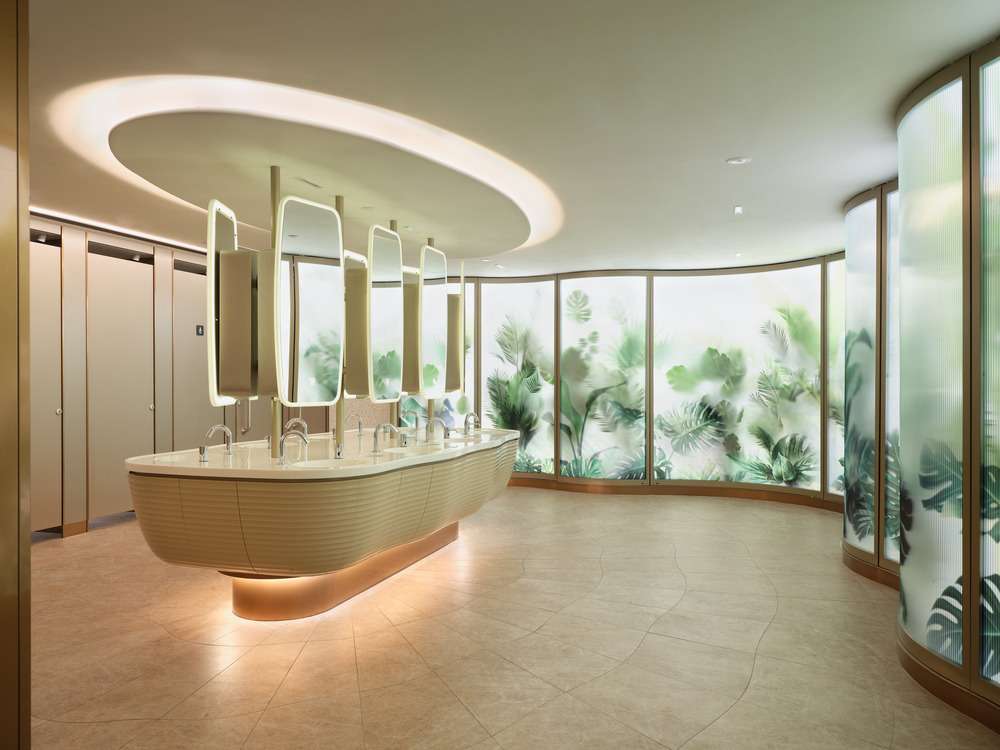
The project has been proudly rated Platinium for The Green Mark Certification Scheme, a green building rating system in Singapore designed to evaluate a building’s environmental impact and performance. It provides a comprehensive framework for assessing the overall environmental performance of new and existing buildings to promote sustainable design and best practices in construction and operations.
Platinum is the highest level of certification under the Green Mark Certification Scheme. Buildings awarded the Platinum certification are industry leaders in environmental sustainability, showcasing exceptional and innovative practices in green building design, construction, and operations. These buildings achieve the highest standards of environmental performance and are models of sustainability.
The project proudly won the A+Awards Popular Choice in the Transport Interiors category; Platinum A’ Design Award in the Interior Space and Exhibition Design category; and BCA Universal Design Excellence Award by the Building and Construction Authority of Singapore.








